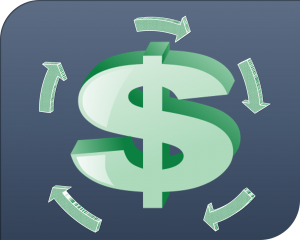Dealing With Cash Flow Problems
 Below are some suggestions for unlocking funds without affecting your operational capacity. Keep in mind that you should always seek professional guidance before making changes to your business if you are unsure of the repercussions or potential issues.
Below are some suggestions for unlocking funds without affecting your operational capacity. Keep in mind that you should always seek professional guidance before making changes to your business if you are unsure of the repercussions or potential issues.
Hidden sources of finance
Most business owners immediately think of the bank or loans when they’re short of money. But there are many more resources you can tap before you ask for that loan or draw on a line of credit. You can often free up funds from within your business by re-examining your business systems, and these funds might in themselves be sufficient for your immediate needs.
To free up funds from within your business, you could look closely at the following.
Assets
Your assets include accounts receivable, inventory, pre-paid expenses, vehicles, plant and equipment and property. Each of these is a possible source of funds.
Accounts receivable
Are you letting some customers have the free use of your money for months? This is a common occurrence in businesses where the owner is so busy operating the business and helping customers that they don’t pay enough attention to basic business procedures. Many customers will take advantage of this ‘free money’. But your business is not to be a free bank.
Here’s how you fix the problem.
- Get paid at the time of service.
- Get invoices out promptly. Become efficient at getting invoices out early – after all, this is your future cash flow.
- Send the invoice with the service, and date the invoice from the day the service was completed rather than following the standard ‘last day of the month’ date for invoices. The earlier the invoice date, the earlier your chances of getting paid.
- Consider changing the terms for your customers. Can you reduce the payment terms to 7 days or 14 days from the date of invoice?
- Follow up promptly when invoices aren’t paid by the due date. Be polite but firm. If you haven’t the time to do this yourself, then appoint someone to do it for you.
- Establish the average age of your Accounts Receivable and set yourself the goal of reducing this age by a set target every month.
- Consider offering a one time discount for prompt payment on old accounts receivable. You have to work out whether the use of money gained earlier is worth the discount you’re offering.
Inventory
Do you have excess money tied up in inventory? This can occur in several ways:
- Carrying high levels of items that you could obtain from suppliers at short notice.
- Having more items than you need in stock.
- Not knowing the number of items you have on hand before ordering.
You need to regularly review your inventory levels, turnover rates and your purchasing policies. Can you free up money by reducing inventory?
Pre-paid expenses
This is another area you could look at. These pre-paid expenses often relate to services. For example, you might have always paid your insurance bill for the year all in one hit, but could you instead arrange to pay small monthly amounts? There might be an additional cost for doing this, but you must weigh the extra cost against the advantages of 12 small payments that your cash flow can comfortably handle versus one large annual payment. Then approach your accountant. Instead of facing a substantial bill once a year, ask if you can pay a set amount monthly.
The same goes for your electricity bills. Ask if you can average out your electricity bills, instead of paying relatively small bills in summer and being hit by big ones in winter. Watch out for automatic payments too (telephone and electricity bills, etc.). These can often throw out your cash flow projections because you’ve forgotten to include them in your cash flow forecasts.
Fixed assets
Fixed assets can often be the source of a significant amount of cash. Do you really put all your assets to full use? You might be able to sell off little-used assets and hire suitable replacements when you require them. You might be able to sell vehicles and lease others instead.
Suppliers
Finally, consider your suppliers as a possible source of funds. Ask for extended payment terms to give you the opportunity to sell the goods first before you have to pay. If the supplier won’t budge, try splitting the order in two and offer to pay normal credit terms (30 days) on one half of the order and 90 days on the other half. Your suppliers will be more likely to agree to this kind of arrangement if you’ve paid them promptly in the past.
Next steps
- Identify exactly how much additional cash you’ll need – this is especially important if you decide you need additional finance from a lender.
- Seek professional help from an accountant, business mentor, or your bank manager.
- Reduce your expenses and tighten your credit policies based on the steps above.
- Research additional options for increasing your cash position, from low-interest bank loans and overdraft facilities to equity-dependent assistance.
How can we help you?
If you would like to find out more about working with us and would like some support, click on the link below to schedule a call to see if we can help.
